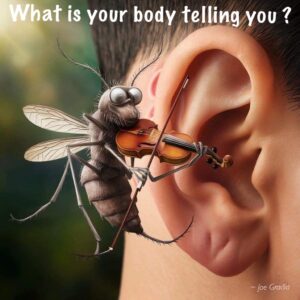 Learning to “listen” to your body—tuning into the signals it sends—is a vital skill for managing stress, preventing illness, and making healthier choices. Here’s a step-by-step approach:
Learning to “listen” to your body—tuning into the signals it sends—is a vital skill for managing stress, preventing illness, and making healthier choices. Here’s a step-by-step approach:
⸻
1. Build Mindful Awareness
• Pause regularly. Set an alarm or habit cue (e.g., at the top of each hour) to stop for 30 seconds.
• Take three slow breaths. Feel the air filling and leaving your lungs.
• Notice where you’re holding tension. Shoulders? Jaw? Belly?
⸻
2. Do a Body-Scan Practice
1. Find a quiet spot and sit or lie down comfortably.
2. Close your eyes and take a few grounding breaths.
3. Bring attention to your feet. Notice warmth, pressure, tingling—whatever is there.
4. Move upward slowly (calves → knees → thighs → hips → belly → chest → shoulders → arms → hands → neck → face).
5. At each spot, label the sensation (e.g., “tight,” “warm,” “ache,” “nothing”).
6. Breathe into any area of discomfort: imagine your breath flowing there to soothe.
Practice 5–10 minutes daily; you’ll start catching subtle signals—hunger pangs, early tension, low energy.
⸻
3. Keep a Body-Awareness Journal
Whenever you notice a strong sensation, jot down:
• Time / Context (e.g., 3 PM, after a meeting)
• Sensation (headache, yawning, stomach grumble, racing heart)
• Intensity (rate 1–10)
• Likely Cause (stress, skipped lunch, dehydration)
• Action Taken (drink water, stretch, walk, rest)
Over a week, you’ll see patterns (e.g., headaches at 4 PM = dehydration).
⸻
4. Track Your Basic Needs
Your body talks loudest through:
• Hunger & fullness. Do you eat only when starving? Try checking in at mild hunger/fullness (3 or 7 on a 1–10 scale).
• Thirst. If mouth feels dry or you’re tired mid-afternoon, pause for a glass of water.
• Rest & sleepiness. Yawning, heavy eyelids, or foggy thinking? That’s a “sleep” signal. Honor it with a nap or earlier bedtime.
• Bathroom habits. Noticing your bladder or bowels signals hydration, diet, or stress levels.
⸻
5. Notice Emotional-Physical Links
• Anxiety often shows as tight chest, racing heart, upset stomach.
• Sadness may feel like a heavy chest or lump in the throat.
• Anger can manifest as clenched jaw, fists, or flushed face.
When an emotion arises, ask:
“What’s happening physically right now?”
Label it (“My chest feels tight”) and then choose a soothing response (deep breaths, a short walk, talking it out).
⸻
By Joe Gradia